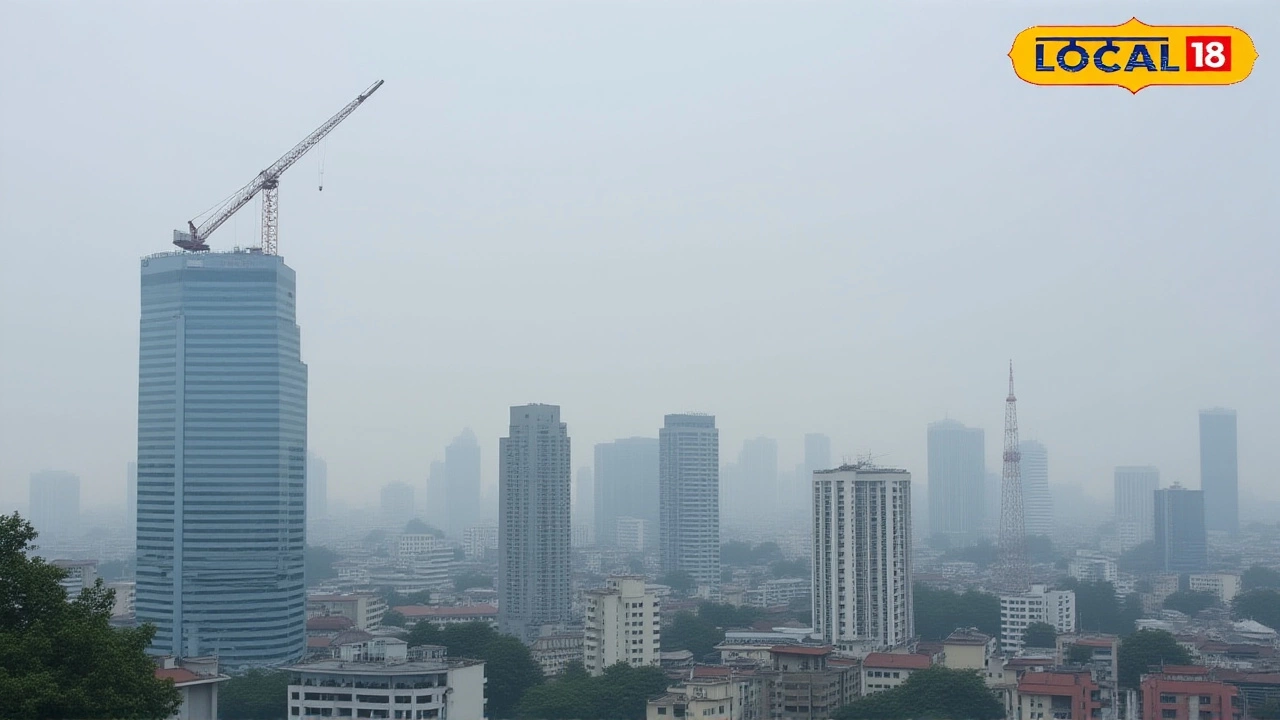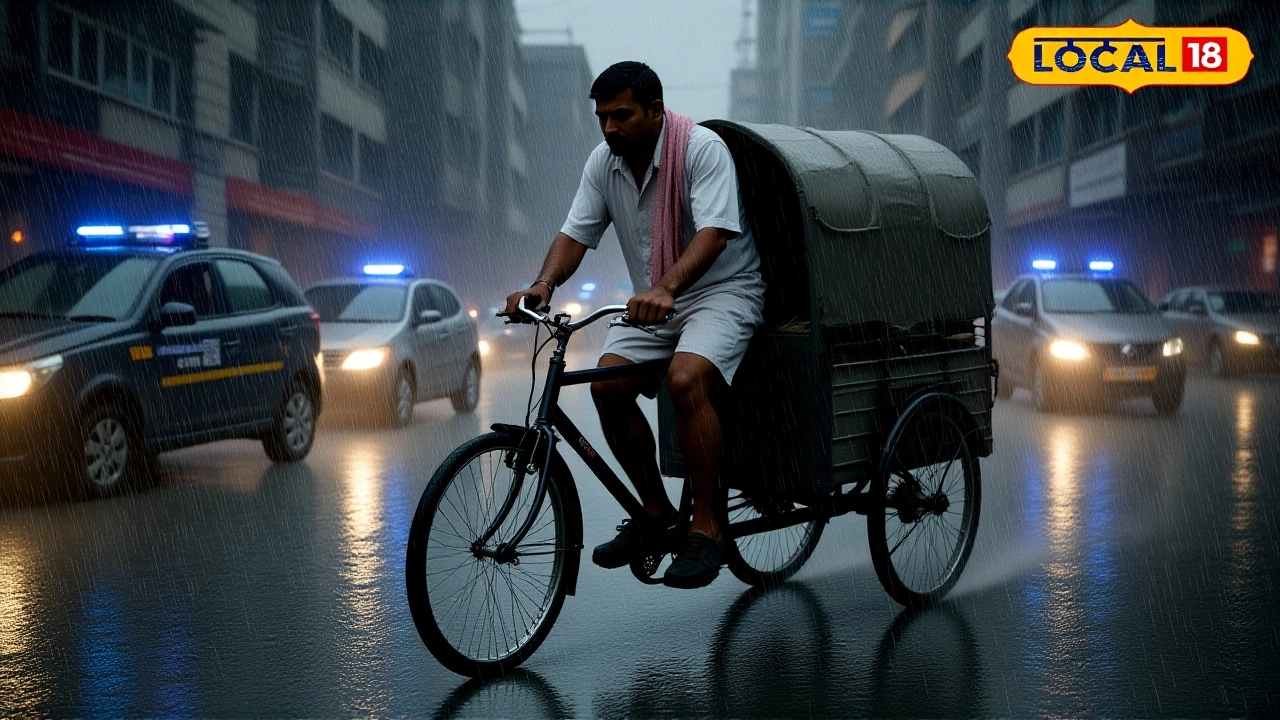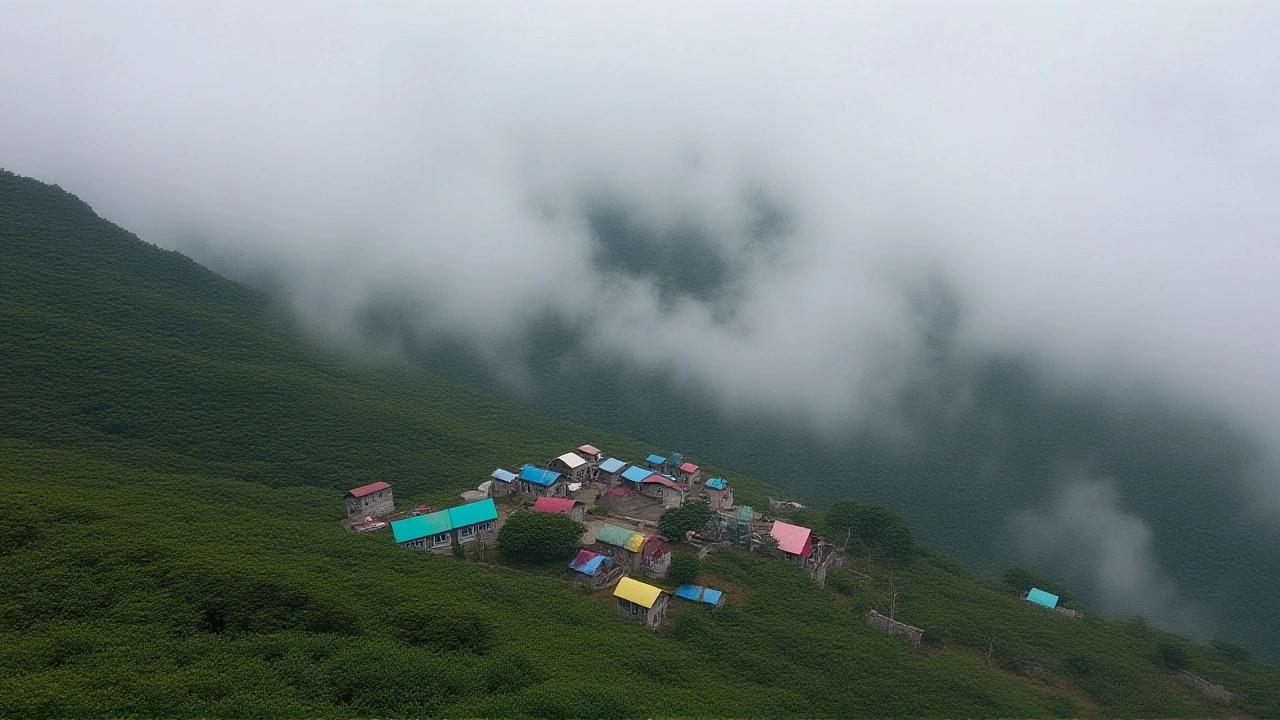Delhi NCR Braces for Fog and Light Rain as October Temperatures Dip to 30°C

On October 30, 2025, residents of Delhi NCR woke up to a hazy morning wrapped in shallow fog, with patches of very light rain drizzling over parts of North Delhi and North East Delhi. The India Meteorological Department confirmed the unusual blend of mist and moisture — a signature of late autumn in the capital, but one that’s growing more persistent as climate patterns shift. Maximum temperatures hovered near 30°C (86°F), a noticeable dip from the month’s usual highs, and while rainfall was minimal, the dampness clung to streets, cars, and clothes — a reminder that monsoon’s retreat doesn’t mean dryness is guaranteed.
What the IMD Forecast Really Means
The India Meteorological Department’s bulletin, issued at 08:30 Hrs. IST on October 30, described conditions as “generally cloudy” with “a spell of very light rain or drizzle at a few places” — a technical way of saying it wasn’t raining everywhere, but enough to make umbrellas worth carrying. The forecast wasn’t dramatic, but it was precise: North Delhi and North East Delhi shared the same conditions, while areas like South Delhi and Gurgaon saw less moisture. The real story, though, was the fog. Not the thick, flight-canceling kind — but the kind that rolls in before sunrise, settles over the Yamuna, and lingers until mid-morning. It’s the kind that makes commuters squint at traffic signals and cyclists slow down, even if the sun eventually burns it off.
Temperature Confusion: Why Different Forecasts Disagree
It’s not unusual for weather apps to vary — but the range here was wider than normal. AccuWeather predicted a high of 92°F (33.3°C), while EaseWeather.com and Latestly.com settled on 30°C (86°F). Weather25.com even suggested a sunny day with 89°F. These discrepancies aren’t errors — they reflect different models, data sources, and how each platform interprets “partly cloudy” versus “mostly clear.” But for Delhi residents, the practical takeaway is simple: expect warmth during the day, but pack a light jacket for early mornings. The real chill comes with the fog.
Historical Context: Is This Normal for October?
October in Delhi is a season of transition — and it’s getting more unpredictable. According to Climate-Data.org, average highs in early October used to sit near 33°C, dropping to 32°C by mid-month. This year, 30°C feels like a cooldown. Historical rainfall data is equally messy: MakeMyTrip.com cites 13 mm of rain for the entire month, while Weather2Travel.com says 24 mm. Meanwhile, Weather25.com insists October has “0 rainy days” — a claim contradicted by the IMD’s own report of drizzle. The truth? October rarely brings heavy rain, but it’s increasingly prone to scattered, light showers and lingering humidity — especially near riverbanks and low-lying areas.

Smog, Fog, and the Slow Burn of Autumn
What follows October 30 is more concerning than the drizzle: a multi-day forecast of smog and shallow fog stretching through November 3. The India Meteorological Department expects morning visibility to drop as pollutants mix with moisture — a toxic cocktail that’s become routine in Delhi’s post-monsoon season. This isn’t just an inconvenience. Studies from the Indian Institute of Tropical Meteorology show that when fog forms over high PM2.5 levels, respiratory distress spikes by 27% in children and the elderly. Schools in Ghaziabad and Noida already reported increased asthma cases last week. The fog may look poetic, but it’s a public health signal.
What Comes Next? The November Pattern
By November 3, the IMD expects skies to clear — but the morning haze will remain. That’s the new normal. The city’s air quality index (AQI) typically crosses 200 — “poor” — by mid-November, and with stubble burning in Punjab and Haryana looming, the fog won’t be the only thing thickening. Experts say the combination of low wind speeds, high humidity, and rising emissions creates a perfect storm for inversion layers — trapping pollution close to the ground. Without a significant wind shift or rainfall, November could see AQI levels spike into the “very poor” range before the 15th. The government’s odd-even rationing scheme is expected to be activated by November 8, based on last year’s timeline.

Why This Matters Beyond the Forecast
This isn’t just about whether you need an umbrella. It’s about how quickly Delhi’s climate is changing. October used to be crisp, dry, and sunny. Now, it’s a liminal space — damp, hazy, uncertain. The city’s infrastructure isn’t built for this. Public transport delays, school closures, and emergency room visits rise with every foggy morning. And with the monsoon’s retreat growing later each year — and winter arriving more abruptly — the window for clean air is shrinking. Residents aren’t just adapting to weather. They’re adapting to a new rhythm of discomfort.
Frequently Asked Questions
Why is there fog in Delhi during October when it’s not winter yet?
Shallow fog in October forms when nighttime temperatures drop below the dew point, and moisture from residual monsoon humidity combines with pollutants. This is becoming more common as urban heat retention delays cooling, while air pollution provides nuclei for water droplets to form. It’s not true winter fog, but a hybrid phenomenon driven by climate change and poor air quality.
Is the light rain on October 30 unusual for Delhi?
Light drizzle in late October isn’t rare, but it’s less frequent than in September. Historically, October averages 7–24 mm of rainfall, mostly in the first week. This year’s isolated drizzle is consistent with shifting monsoon withdrawal patterns — the rains are lingering longer in pockets, especially near the Yamuna and in northern districts like North East Delhi.
How does this weather affect daily life in Delhi NCR?
Morning fog reduces visibility, causing delays in flights from Indira Gandhi International Airport and disruptions to metro and road transport. Respiratory issues rise, especially among children and the elderly. Schools in polluted zones often suspend outdoor activities. The dampness also increases mold growth in homes, and commuters report increased fatigue due to lower oxygen levels in hazy air.
What’s the difference between smog and fog in Delhi’s autumn?
Fog is pure water droplets suspended in air, forming when humidity is high and temperatures drop. Smog is a toxic mix of fog and pollutants — especially PM2.5, nitrogen oxides, and ground-level ozone. In Delhi, what looks like fog is often smog, particularly after October 20. The two blend together, making it hard to distinguish visually — but only smog carries health risks.
Will the temperature keep dropping after October 30?
Yes. The IMD forecasts a gradual decline through November, with highs falling from 31°C to around 26°C by the end of the month. Nights will cool faster, dipping below 18°C in some areas. But the drop in temperature won’t mean cleaner air — it’ll likely make smog worse as cooler air traps pollutants closer to the surface.
What should residents do to protect themselves?
Use N95 masks during early commutes, keep windows closed until midday, and use air purifiers indoors. Avoid outdoor exercise before 10 a.m. when fog and pollution peak. Stay hydrated, monitor AQI via the SAFAR app, and check local school advisories. Elderly and asthmatic individuals should keep rescue inhalers handy and consult doctors if breathing becomes difficult.